How I Developed This Recipe
Imagine twirling your chopsticks through a steaming bowl of soba noodles, each strand cloaked in a silky beef-and-egg sauce that clings deliciously until the last bite. That’s Nikutama Ankake Soba (肉玉あんかけそば), a warming noodle dish that combines tender beef slices and eggs in a rich, ginger-spiked gravy.
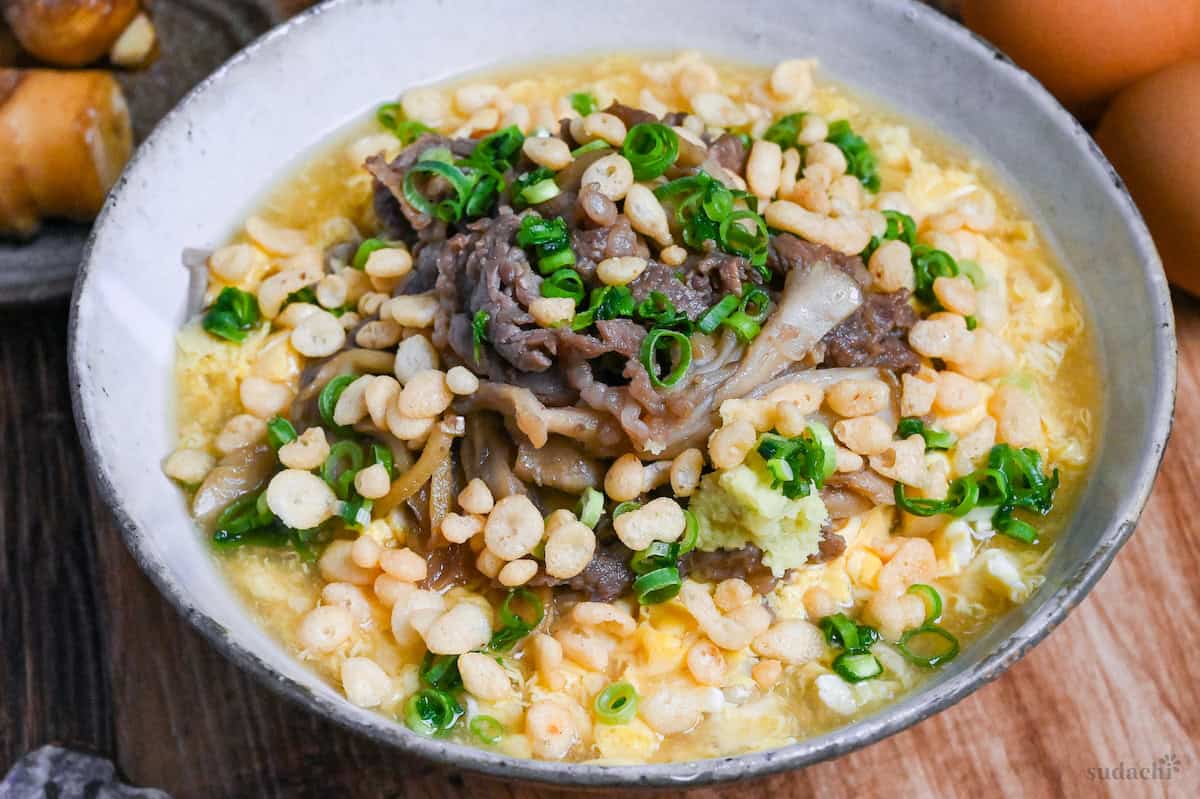
My version was inspired by Marugame Seimen’s limited-edition udon creation, but I’ve reimagined it with buckwheat soba-the nutty noodles add beautiful contrast to the savory sauce.
The reason is that I had already created similar recipes, such as beef udon and oyako udon, so this time I decided to use soba noodles.
(In Japanese, “nikutama” simply means meat (niku) and egg (tamago), while “ankake” describes the starch-thickened sauce-nothing fancy, just pure comfort in a bowl.)

Visual Walkthrough & Tips
Here are my step-by-step instructions for how to make Nikutama Ankake Soba at home. For ingredient quantities and simplified instructions, scroll down for the Printable Recipe Card below.
This section aims to provide a comprehensive overview of the cooking steps and techniques with visuals. It also includes more in-depth tips and tricks and explains why I do what I do.
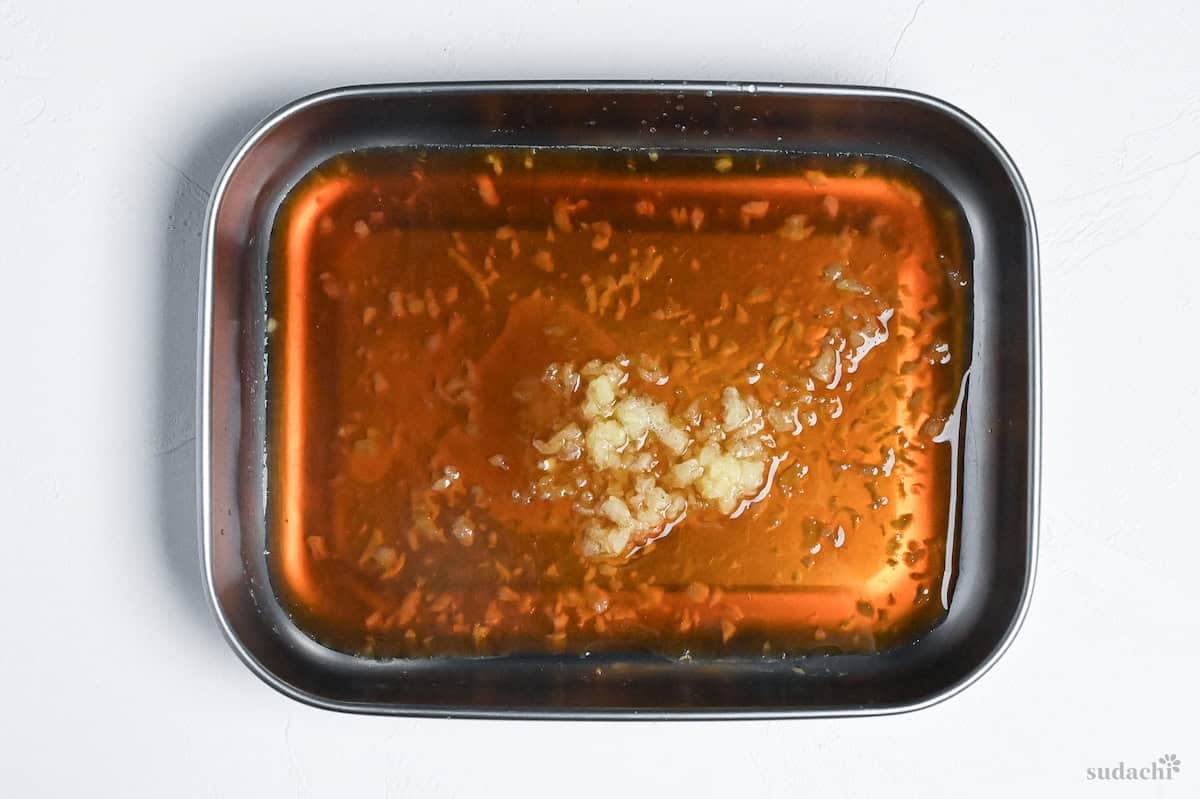
Combine all the marinade ingredients in a container, bowl, or sealable bag.
- Sugar
- Sake
- Mirin
- Japanese soy sauce
- Water
- Grated apple
- Grated ginger
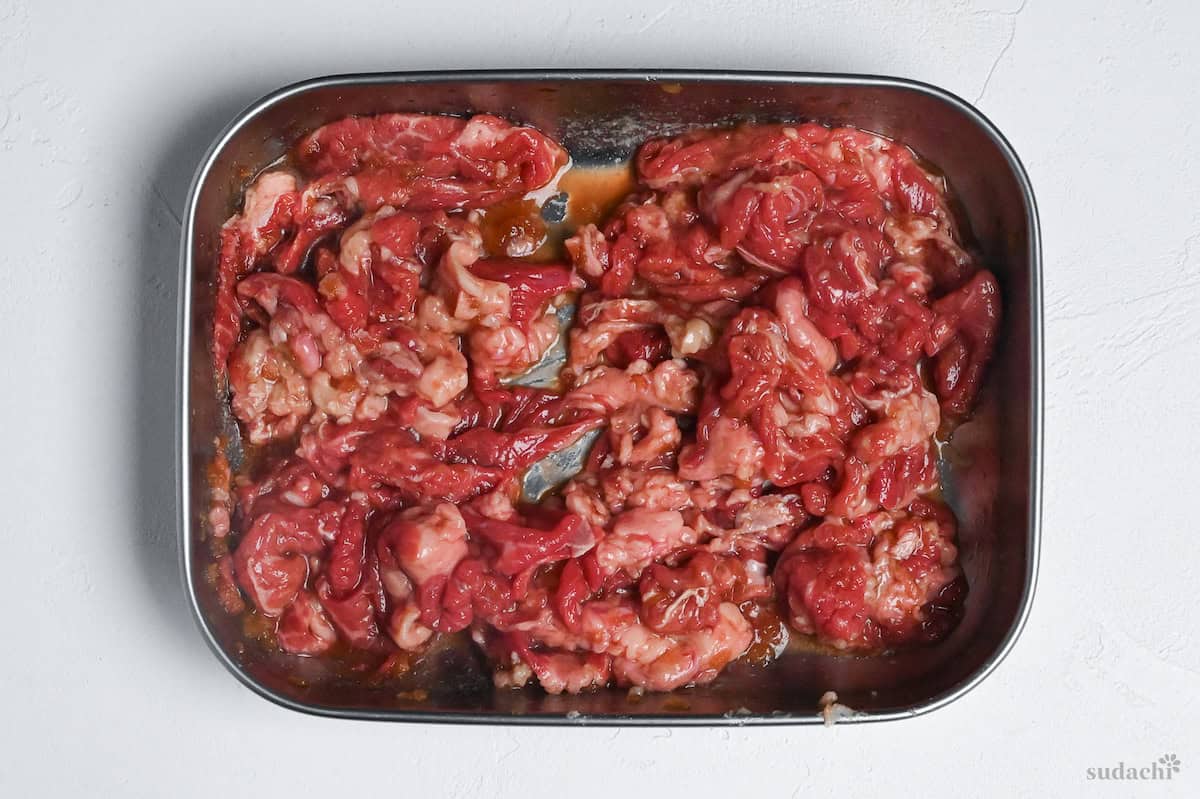
Then, cover the beef and put it in the refrigerator for 30 minutes to marinate.
The 30-minute marinating time allows the ginger’s protease enzymes to break down the protein structure, making the meat more tender – just be careful not to let it marinate too long, it can make the meat mushy.
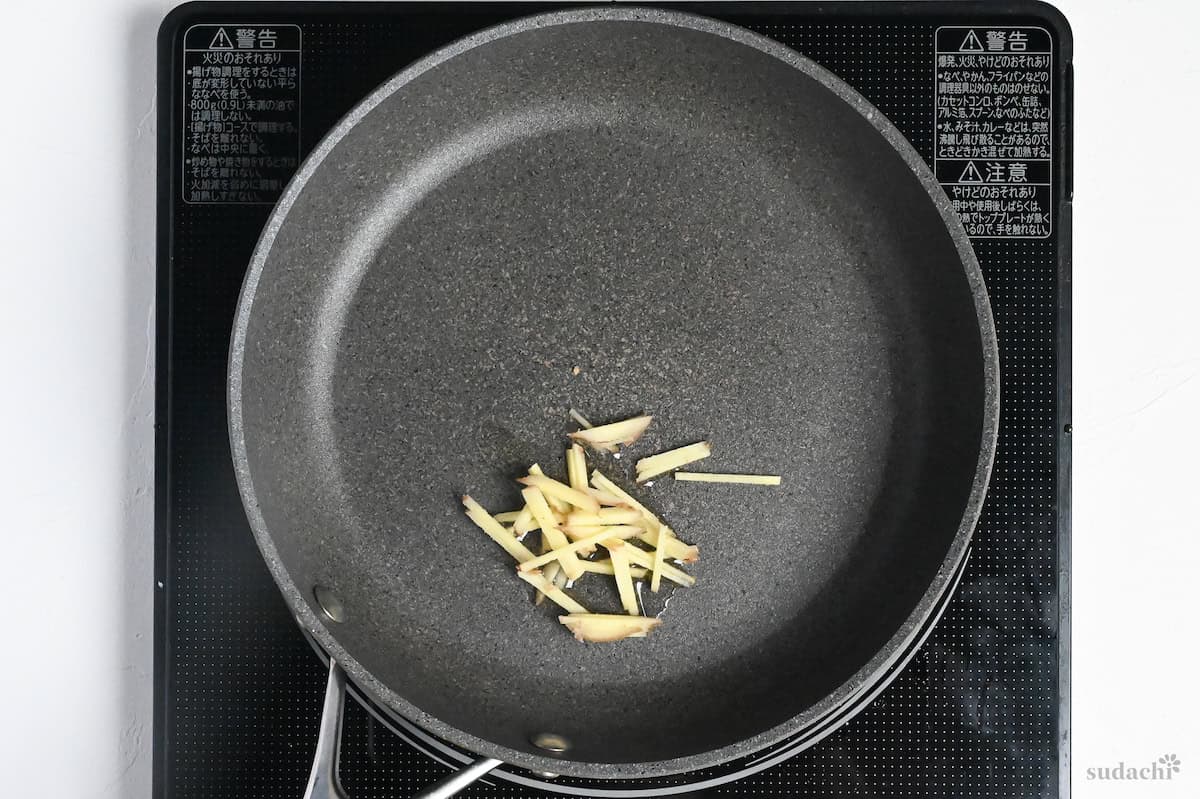
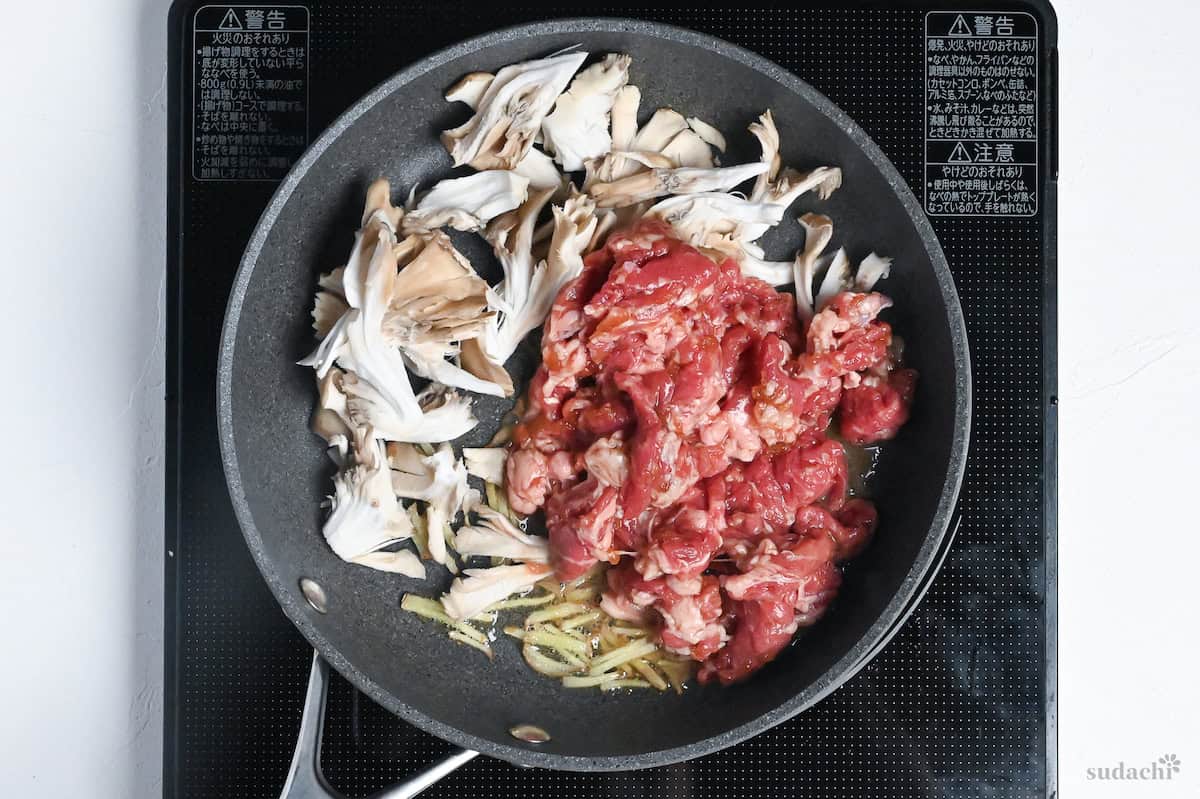
Heat oil in a frying pan over medium heat. Once it’s hot, add the julienned ginger and stir-fry it for about 30 seconds, just until it’s fragrant.

Then add the marinated beef and marinade along with roughly cut maitake (or shiitake) mushrooms, and stir-fry it until the beef is cooked through. Take it off the heat and put it to the side.
Maitake mushrooms contain guanylic acid, which creates a synergistic umami effect when combined with the inosinic acid in beef. This combination amplifies the savory taste!

Cook your soba noodles according to package instructions, using a large pot with plenty of water (at least 1 liter per 100g of noodles) to prevent sticking and ensure even cooking.
Use a larger pot than you think you need. The extra space prevents boil-overs and maintains a consistent water temperature, essential for achieving the perfect texture.
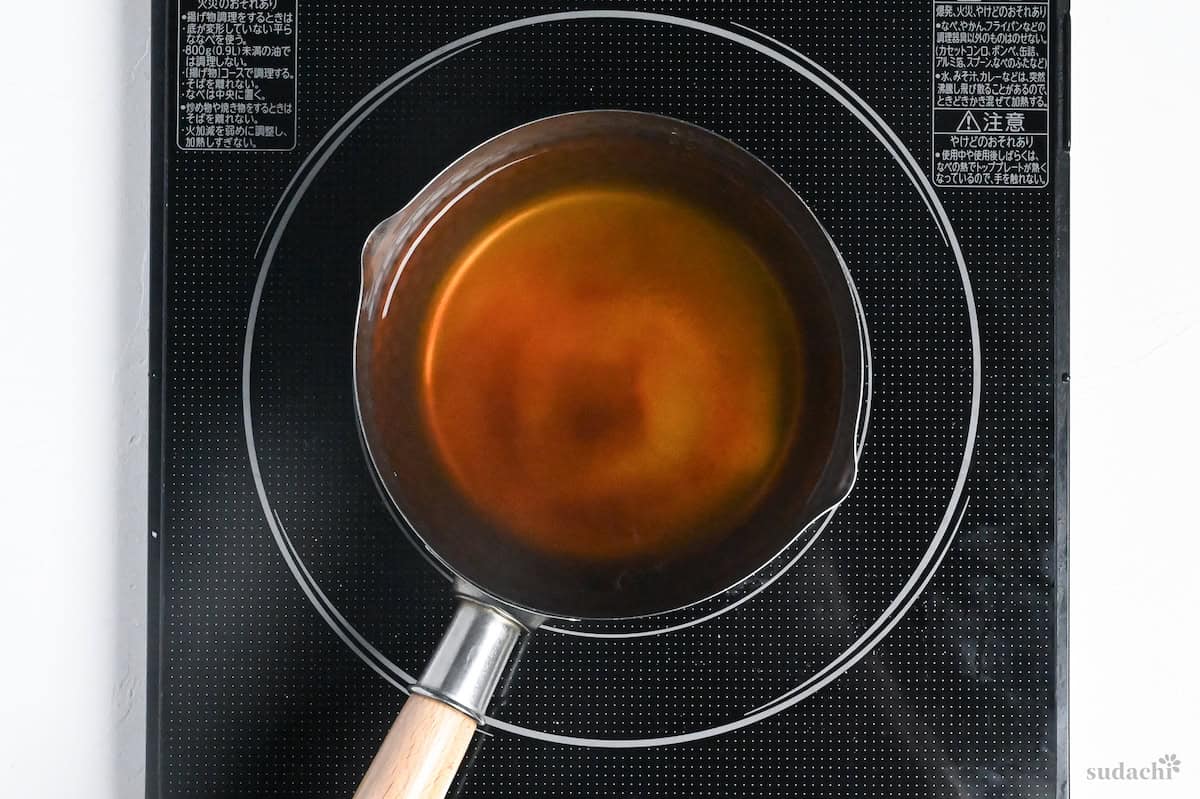
In a medium saucepan, mix together dashi stock, salt, soy sauce, mirin, sugar, and oyster sauce. Bring it to a boil, then turn it down to a simmer.
Remember to adjust the seasoning at this point. Once the sauce is thickened, it becomes harder to incorporate seasonings evenly, so it’s always better to get the taste right before adding the slurry.
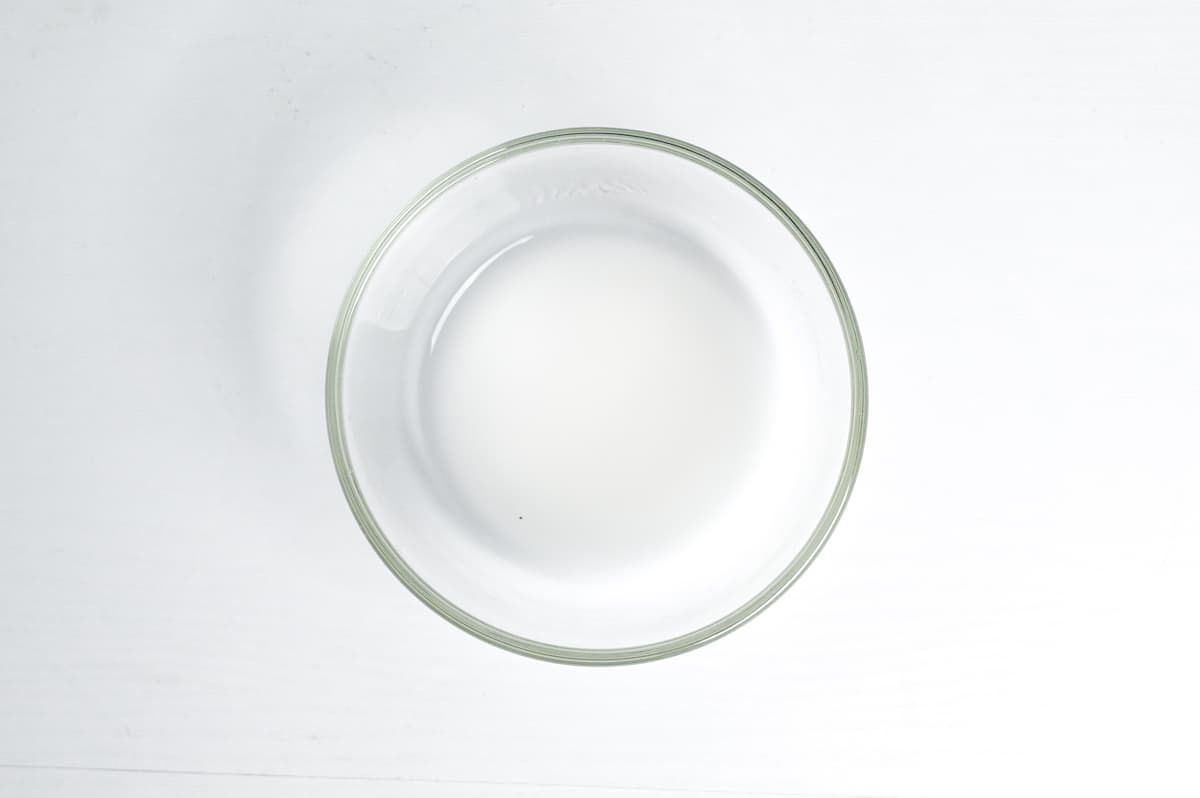
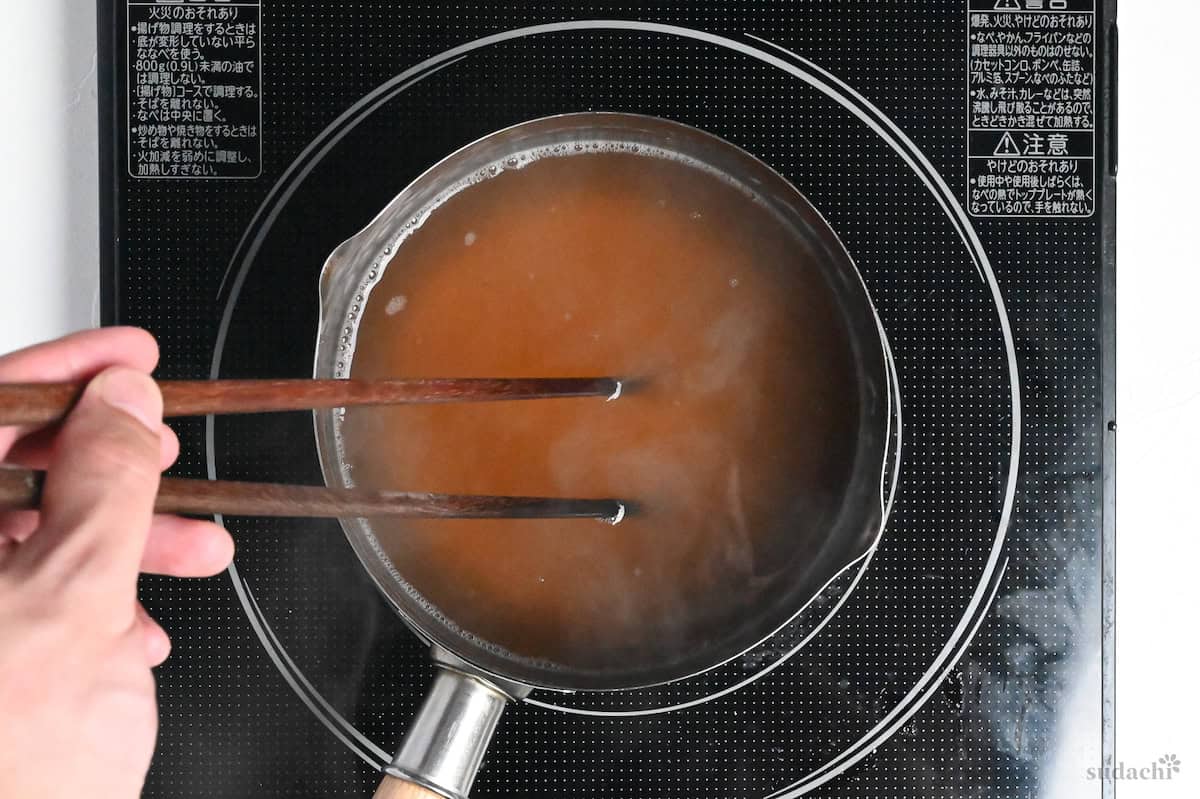
In a small bowl, mix potato starch with cold water just before use. Turn off the heat completely under the soup. Pour the slurry in a thin, steady stream while stirring constantly, then return to medium heat while continuing to stir.
Starch begins to thicken at 70°C (158°F). Turning off the heat before adding prevents instant clumping, while stirring during reheating ensures even thickening throughout the soup.
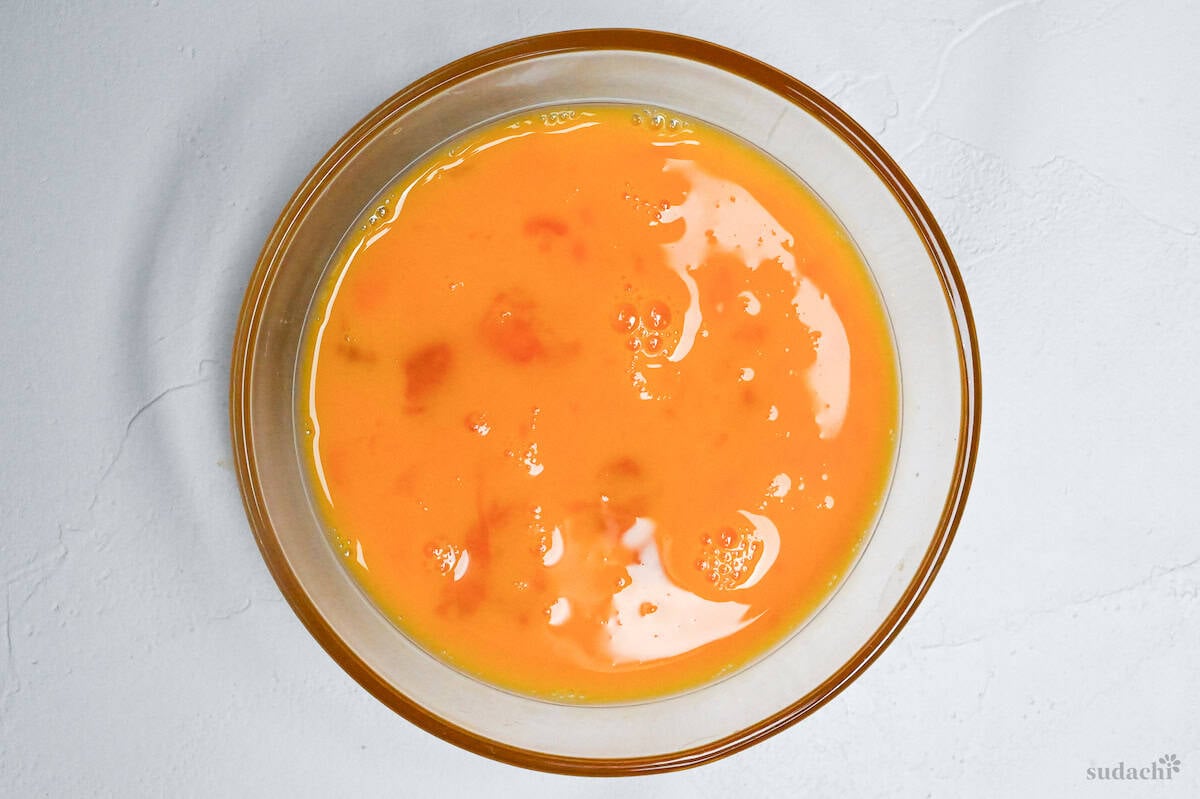
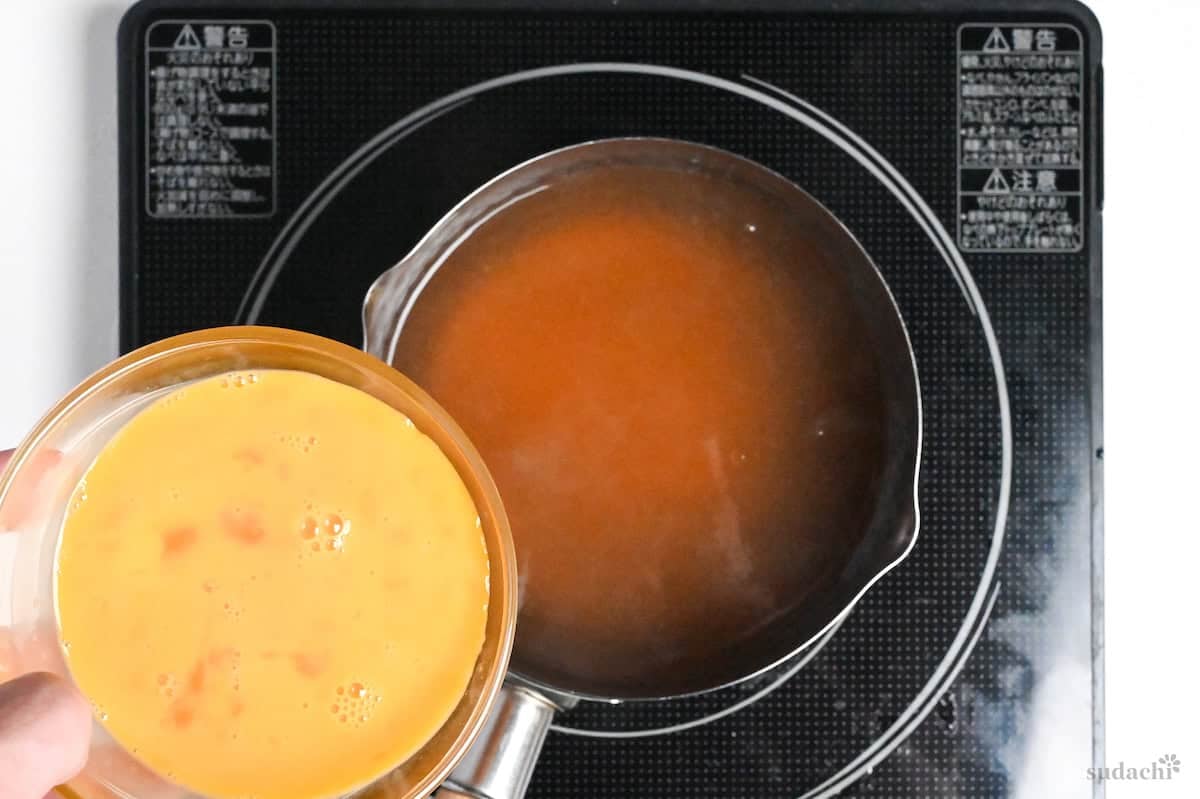
Bring the thickened soup back to a gentle boil. Beat two eggs thoroughly in a separate bowl.
Add the eggs in thirds, allowing the soup to return to a simmer between each addition.
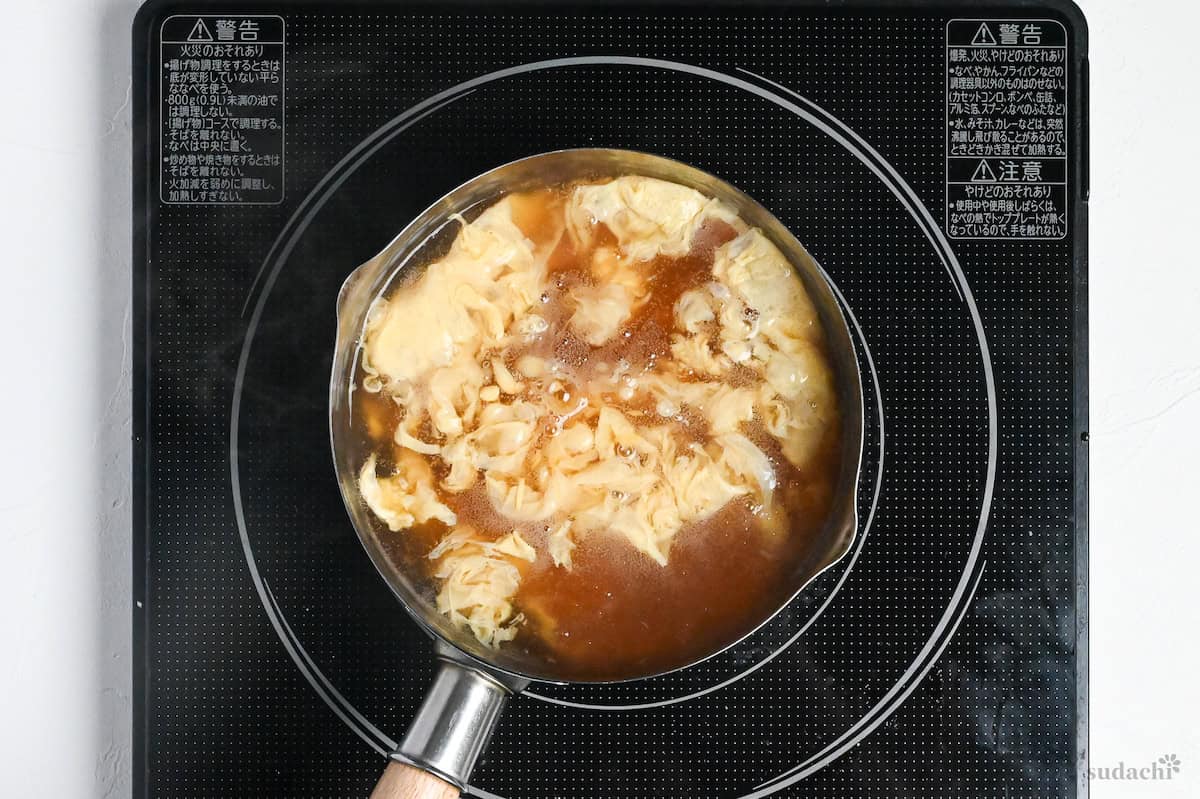
This technique prevents the temperature from dropping too dramatically, ensuring the eggs form delicate strands rather than dissolving into the broth.
After adding the eggs, stir gently in one direction only. Vigorous mixing breaks the eggs into too-small pieces, while minimal stirring creates beautiful, fluffy strands.
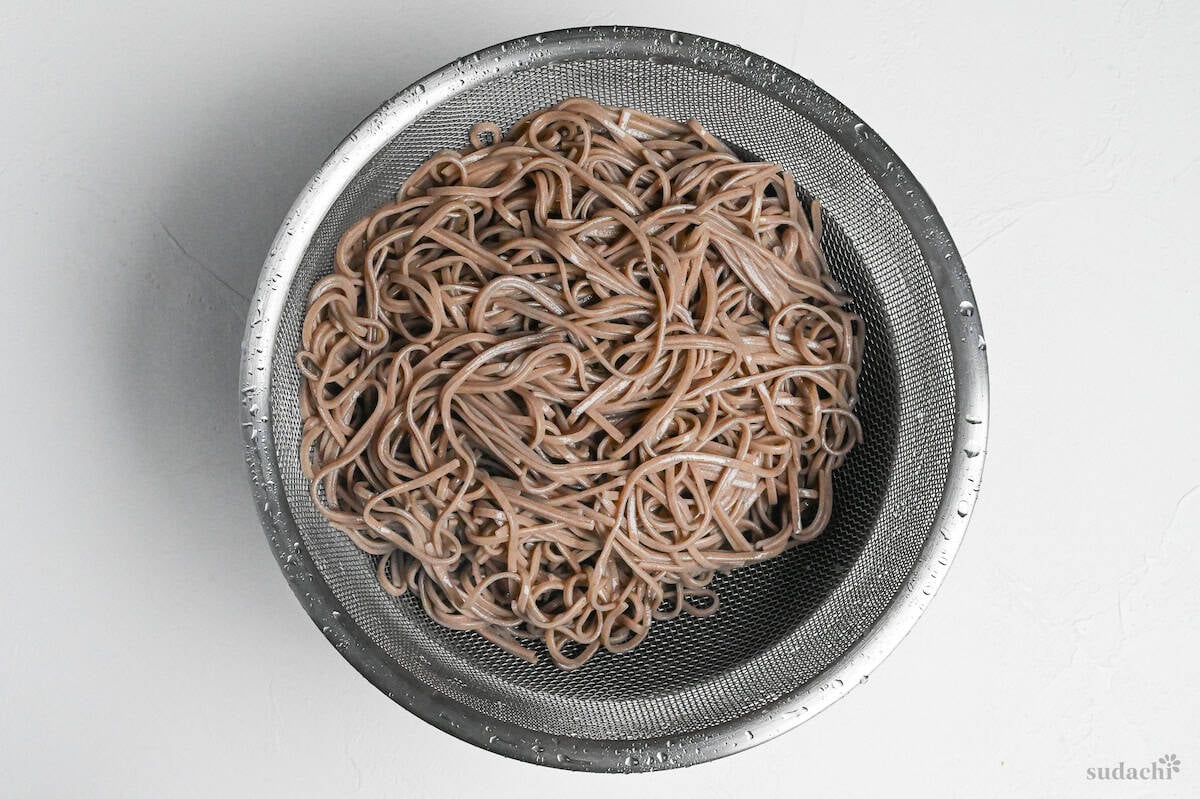
Rinse the cooked soba thoroughly under cold water to get rid of excess starch, then quickly pour hot water over them to reheat.
Divide the warm soba between two bowls. Ladle the egg-enriched soup over the noodles, then top with the reserved beef and mushrooms.
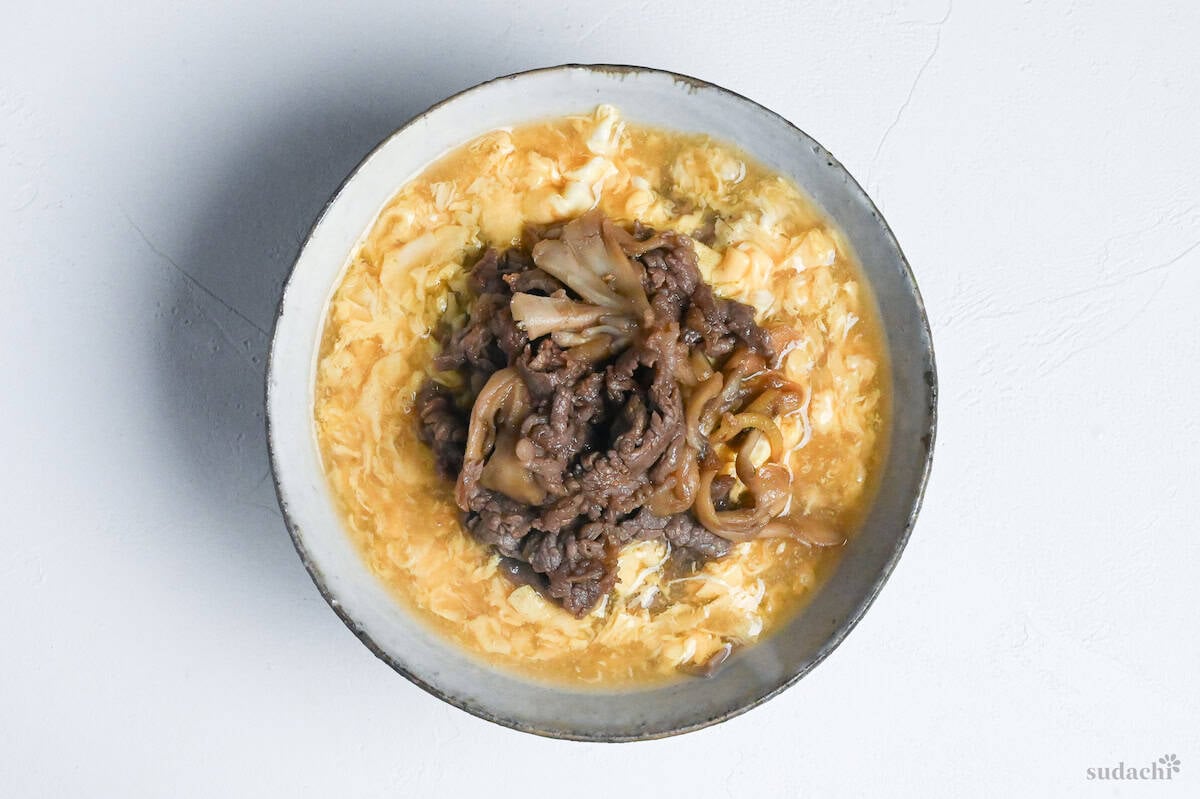
Add your garnishes – green onions, grated ginger, and tempura flakes – just before serving.
Transform your nikutama ankake soba with these Japanese condiments that add new dimensions of flavor:
- Yuzu kosho
- Yuzu peel
- Sansho pepper
- Shichimi togarashi
- Kizami nori
These condiments work best when added halfway through your meal. Start with the original flavors, then enhance strategically to prevent palate fatigue. Each condiment offers unique benefits:
- Acidic: Yuzu kosho and yuzu peel refresh the palate
- Warming: Sansho and shichimi add depth and heat
- Umami: Kizami nori enhances savory notes
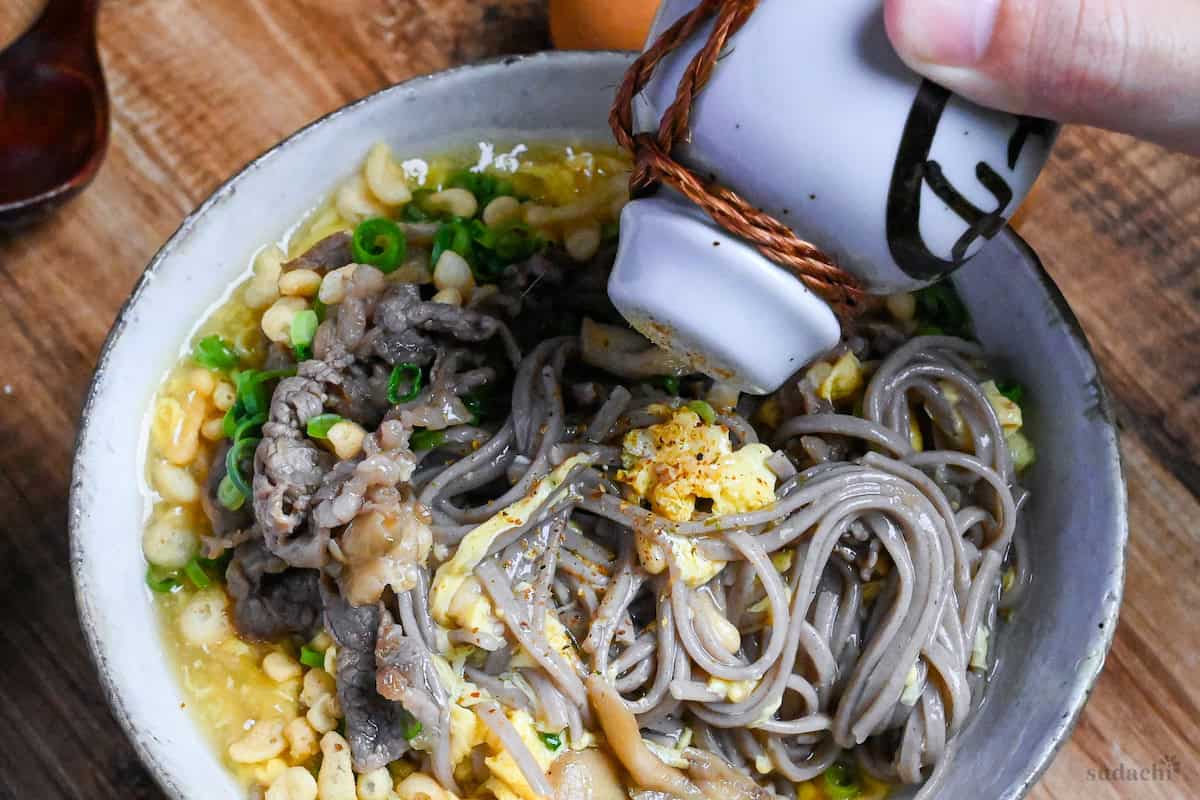
Essential Tips & Tricks
- Turn heat OFF before adding starch slurry to prevent instant clumping.
- Let soup return to a simmer between each egg addition for delicate strands.
- Marinate beef for 20-30 minutes minimum to allow enzymes to tenderize effectively.
- Taste and adjust seasonings BEFORE thickening (thickened soup is harder to season).
- Rinse cooked soba in cold water, then quickly pour hot water before serving.
- Add tempura flakes at the very last moment to preserve crunch.
With these simple tips in mind, you’re set for success every time you make this recipe.
Meal Prep & Storage
This nikutama ankake soba recipe is NOT suitable for meal prep in its completed form as the thickened sauce (ankake) doesn’t store well. However, you can prepare the individual elements in advance for convenience.
- Component Prep: Avoid marinating the beef for more than 30 minutes (it can become overmarinated), cook it as soon as the marinating time is up. You can store the cooked beef and mushrooms up to 3 days ahead (store in the refrigerator). The unthickened soup base (without starch/slurry) can be made 2-3 days ahead. When ready to serve, heat up the soup, add fresh slurry, then add eggs. Never thicken the soup in advance.
- Noodle Prep: Soba noodles should always be cooked fresh. Pre-cooked soba becomes sticky and loses its characteristic texture.
Serving Suggestions

I hope you enjoy this recipe! If you try it out, I’d really appreciate it if you could spare a moment to let me know what you thought by giving a review and star rating in the comments below. It’s also helpful to share any adjustments you made to the recipe with our other readers. Thank you!
More Noodle Recipes
Hungry for more? Explore my noodle recipe collection to find your next favorite dishes!

Nikutama Ankake Soba (Beef & Egg Soba Noodle Soup)
Ingredients
- 2 ptns dry soba noodles or fresh soba noodles
- 150 g thinly sliced beef preferably well-marbled cut
- 50 g maitake mushrooms or mushroom of your choice
- 1 tbsp ginger root peeled, julienned
- 1 tsp cooking oil neutral oil like vegetable, canola, or rice bran
Marinade
- 2 tbsp water
- 1 tbsp Japanese soy sauce (koikuchi shoyu)
- 1 tbsp sake drinking-grade pure rice sake recommended
- 1 tbsp mirin
- 1 tbsp grated apple
- ½ tbsp sugar I used light brown sugar
- ½ tsp grated ginger root or ginger paste
Soup
- 500 ml dashi stock
- 1 tsp salt
- 1 tsp mirin
- ½ tsp sugar
- ½ tsp Japanese soy sauce (koikuchi shoyu)
- ½ tsp oyster sauce
- 1 tbsp potato starch (katakuriko) or cornstarch
- 1 tbsp water for slurry
- 2 eggs
Topping
- finely chopped green onions
- grated ginger root
- tempura flakes (tenkasu)
My recommended brands of ingredients and seasonings can be found in my Japanese pantry guide.
Can’t find certain Japanese ingredients? See my substitution guide here.
Instructions
- Take a bowl or container and add 2 tbsp water, 1 tbsp Japanese soy sauce (koikuchi shoyu), 1 tbsp sake, 1 tbsp mirin, 1 tbsp grated apple, ½ tbsp sugar and ½ tsp grated ginger root. Mix well, then add 150 g thinly sliced beef. Mix until coated, then cover and refrigerate for 20-30 minutes.

- Once the marinating time is up, heat a frying pan over medium heat and add 1 tsp cooking oil. Once hot, add 1 tbsp ginger root and fry until fragrant (about 30 seconds).

- Add the marinated beef along with the marinade and 50 g maitake mushrooms to the pan.

- Simmer the beef and mushrooms in the sauce until the beef is cooked and the mushrooms are softened, then remove the pan from the heat.

- Boil 2 ptns dry soba noodles in plenty of water for the time stated on the packaging. Once cooked, drain in a colander and rinse with cold water.

- While the noodles cook, make the soup. Take a separate pot and add 500 ml dashi stock, 1 tsp salt, 1 tsp mirin, ½ tsp sugar, ½ tsp Japanese soy sauce (koikuchi shoyu) and ½ tsp oyster sauce. Mix well and heat until it reaches a boil.

- Once boiling, turn off the heat. Take a small bowl and mix 1 tbsp potato starch (katakuriko) and 1 tbsp water to make a slurry. Slowly drizzle the slurry into the soup while mixing continuously to prevent lumps.

- Turn the heat back on and bring to a gentle simmer, mixing occasionally. In the meantime, crack 2 eggs into a jug and whisk thoroughly.

- Once the soup starts to bubble again, drizzle the whisked eggs into the pot one-third at a time, allowing the soup to return to simmer between each addition. Stir in one direction to prevent breaking the eggs. Once the eggs are cooked to your liking, take the pot off the heat.

- Rinse the cooked soba noodles with hot water to warm them through, then shake thoroughly and place in serving bowls. Pour the eggs and soup over the noodles, then top with the beef and mushroom mixture.

- Garnish with finely chopped green onions, grated ginger root, and tempura flakes (tenkasu) to taste. See note for additional flavor variations. Enjoy!

Notes
- Mix potato starch with water immediately before using.
- Always taste and adjust seasonings before adding the thickening slurry – once thickened, incorporating seasonings becomes much harder.
- For mushroom substitutions, use shiitake instead of maitake in the same quantity, or try button mushrooms for a milder flavor.
- For flavor variations (味変), offer yuzu kosho, yuzu peel, sansho powder, or shichimi togarashi halfway through the meal to refresh the palate and prevent flavor fatigue.
- Do not store a completed dish. Prep components separately up to 3 days ahead if needed, but always thicken just before serving.
- Serving ideas: Cucumber pickles, Napa cabbage pickles, Spinach ohitashi salad, Hiyayakko (cold tofu).
- Note: While the nutritional information includes the full serving of broth, most people in Japan don’t actually finish all the soup.




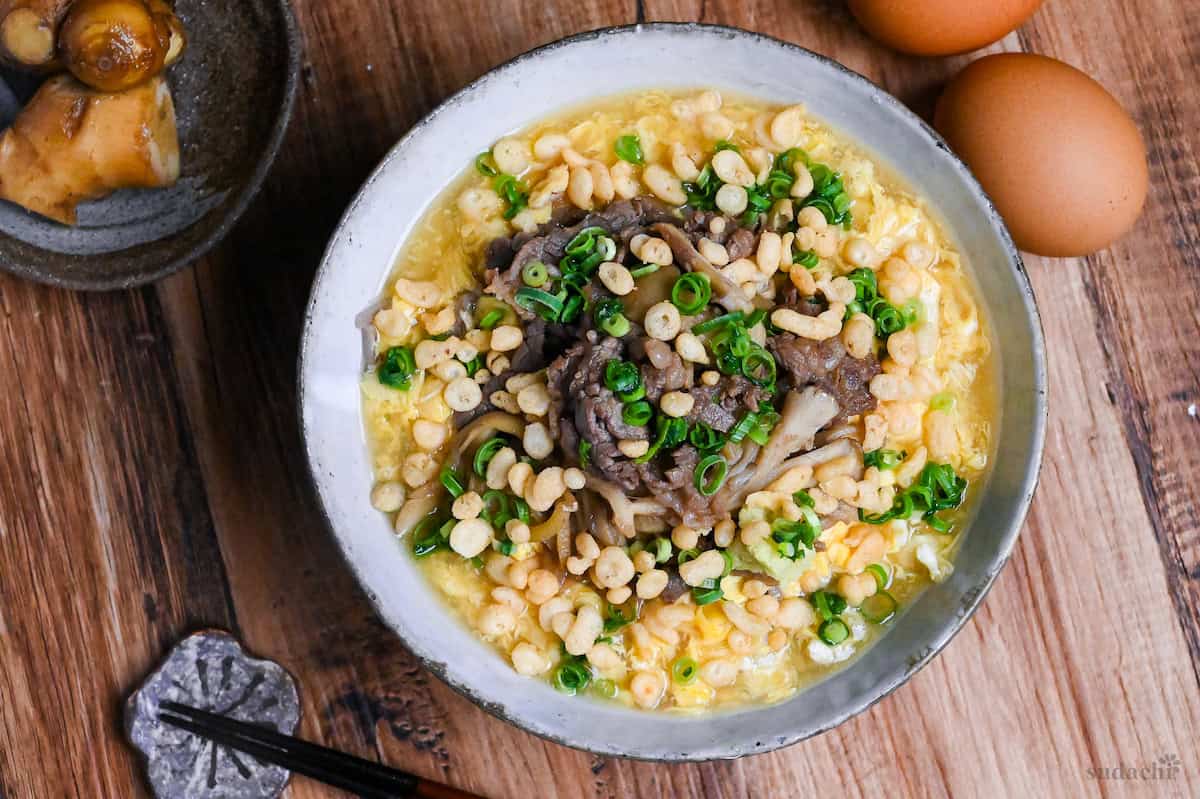
Leave a rating and a comment